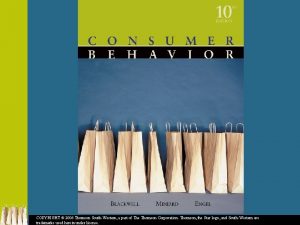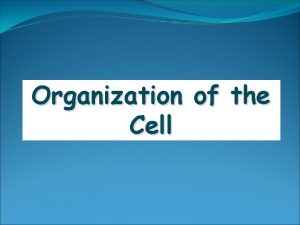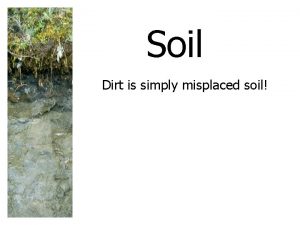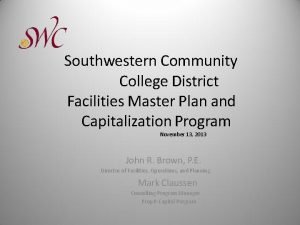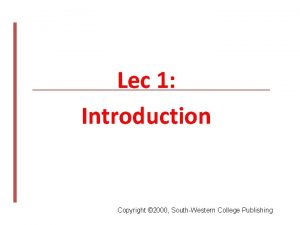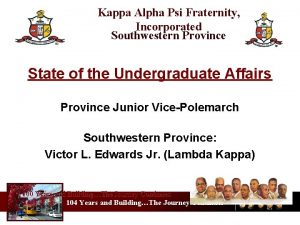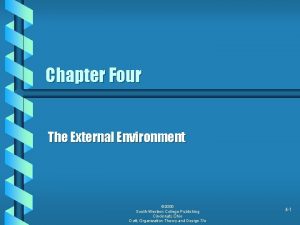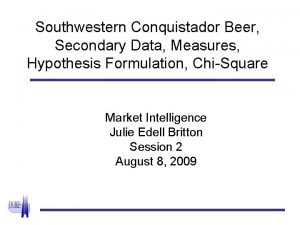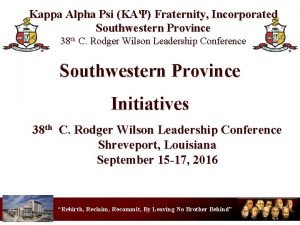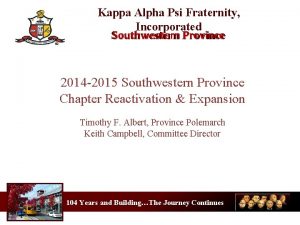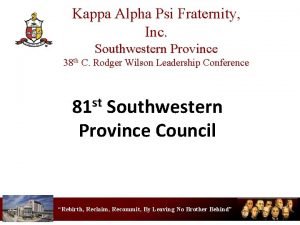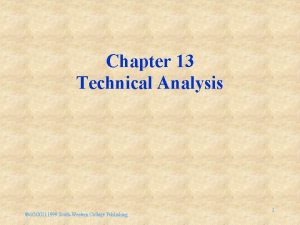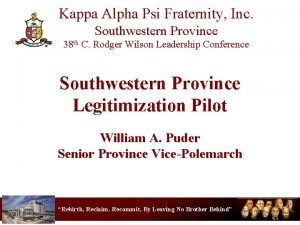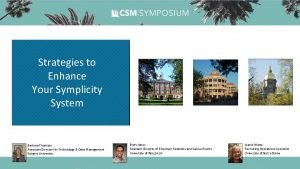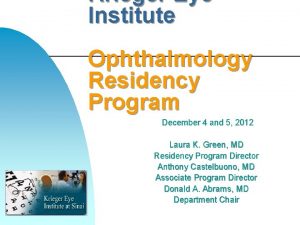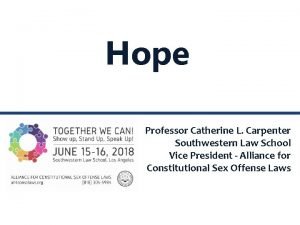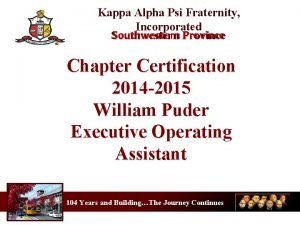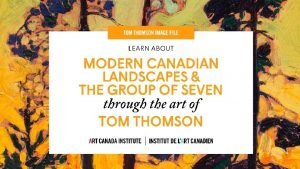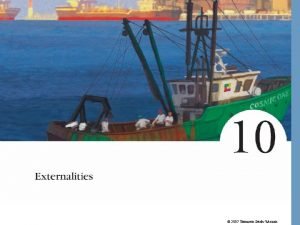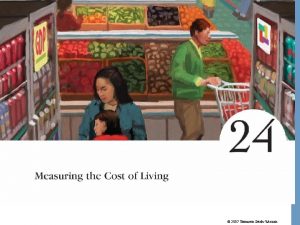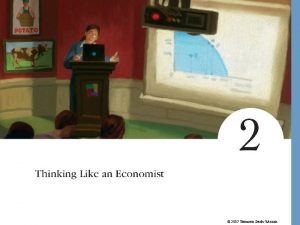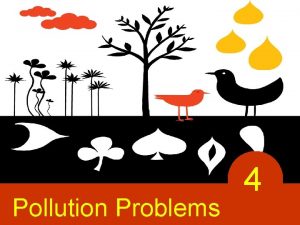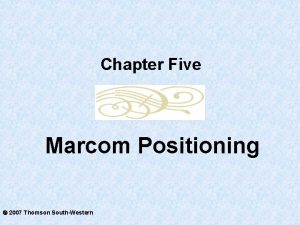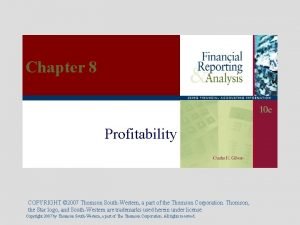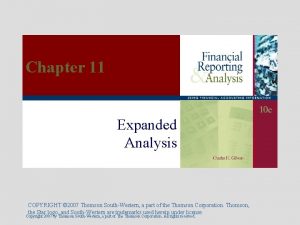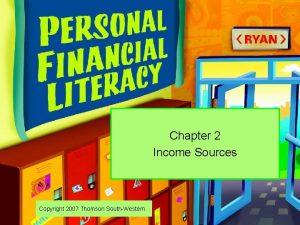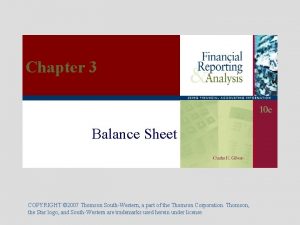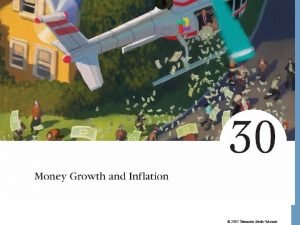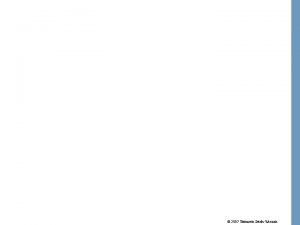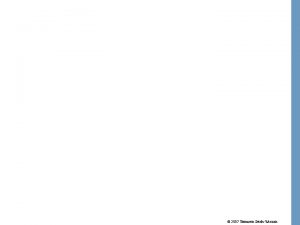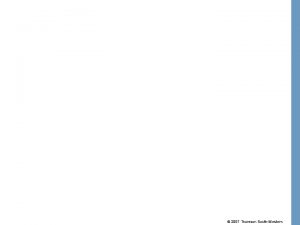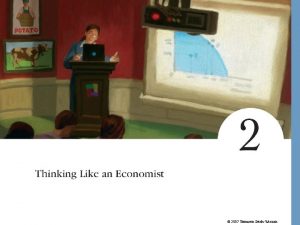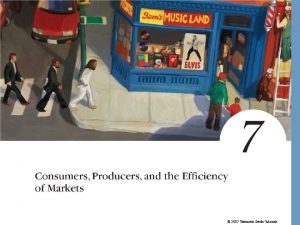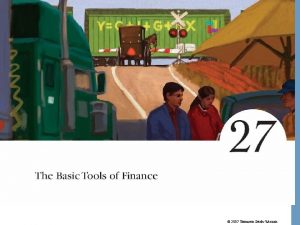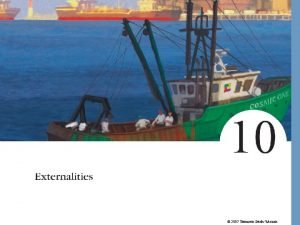2007 Thomson SouthWestern The Goals of chapter 29

































































- Slides: 65

© 2007 Thomson South-Western

The Goals of chapter 29 • To examine the role of money in the economy. • To provide the background for the following analysis: -- the long-run effects of changes in the quantity of money (Inflation is a monetary phenomenon. ) -- the short-run effects of changes in the quantity of money on unemployment rate and economic growth rate. © 2007 Thomson South-Western

THE MEANING OF MONEY • Money(貨幣) is the set of assets in an economy that people regularly use to buy goods and services from other people. That is, goods and services buy money, and money buys goods and services in monetary economy. • Imagine that there was no item in the economy widely accepted in exchange for goods and service. People would have to rely on barter exchanges to obtain the things they need. That is, good and service buy goods and service in the barter economy. © 2007 Thomson South-Western

The Functions of Money • Money has three functions in the economy: – Medium of exchange (交易媒介) – Unit of account (計價單位) – Store of value (價值儲藏) © 2007 Thomson South-Western

The Functions of Money • Medium of Exchange – A medium of exchange is an item that buyers give to sellers when they want to purchase goods and services. – A medium of exchange is anything that is readily acceptable as payment. © 2007 Thomson South-Western

The Functions of Money • Unit of Account – A unit of account is the yardstick people use to post prices and record debts. • Store of Value – A store of value is an item that people can use to transfer purchasing power from the present to the future. © 2007 Thomson South-Western

The Functions of Money • Liquidity (流動性)is the ease with which an asset can be converted into the economy’s medium of exchange. © 2007 Thomson South-Western

The Kinds of Money • Commodity money (商品貨幣)takes the form of a commodity with intrinsic value. – Examples: Gold, silver, cigarettes. • Fiat money is used as money because of government decree. – It does not have intrinsic value. – Examples: Coins, currency, check deposits. – The acceptance depends as much on expectations and social convention as on government decree. © 2007 Thomson South-Western

The Kinds of Money • Even through fiat money has no intrinsic value, when one person decides to hold fiat money, she is confident that, in the future, another person will accept the money, in exchange for something that she does value. That is, the value of fiat money is determined by the confidence. © 2007 Thomson South-Western

Money in the U. S. Economy • The quantity of money circulating in the economy, called the money stock(貨幣存量), has a powerful influence on economic activities. • Currency (現金)is the paper bills and coins in the hands of the public. • Demand deposits (活期存款)are balances in bank accounts that depositors can access on demand by writing a check or using ATM. © 2007 Thomson South-Western


Two Measures of the Money Stock for the U. S. Economy Billions of Dollars M 2 $6, 398 • Savings deposits • Small time deposits • Money market mutual funds • A few minor categories ($5, 035 billion) $1, 363 0 M 1 • Demand deposits • Traveler’s checks • Other checkable deposits ($664 billion) • Currency ($699 billion) • Everything in M 1 ($1, 363 billion) © 2007 Thomson South-Western

台灣貨幣存量: 1980 -2006 © 2007 Thomson South-Western

台灣貨幣存量: 1980 -2006 © 2007 Thomson South-Western

台灣貨幣存量: 1980 -2006 © 2007 Thomson South-Western

Where Is All The Currency? • In 2004 there was $699 billion of U. S. currency outstanding. – That is $3, 134 in currency per adult. • Who is holding all this currency? No one knows for sure, but there are two plausible explanations: – Currency held abroad – Currency held by illegal entities © 2007 Thomson South-Western

THE FEDERAL RESERVE SYSTEM • Whenever an economy relies on a system of fiat money, some agency must be responsible for regulating the system. • The Federal Reserve (Fed) serves as the central bank in U. S. A. – It is designed to oversee the banking system. – It regulates the quantity of money in the economy. © 2007 Thomson South-Western

THE FEDERAL RESERVE SYSTEM • The Fed was created in 1913 after a series of bank failures convinced Congress that the United States needed a central bank to ensure the health of the nation’s banking system. © 2007 Thomson South-Western

THE FEDERAL RESERVE SYSTEM • The primary elements in the Federal Reserve System are: – The Board of Governors – The 12 Regional Federal Reserve Banks – The Federal Open Market Committee © 2007 Thomson South-Western

The Fed’s Organization • The Fed is run by a Board of Governors, which has seven members appointed by the president and confirmed by the Senate. • Among the seven members, the most important is the chairman of Board of Governors. – The chairman directs the Fed staff, presides over board meetings, and testifies about Fed policy in front of Congressional Committees. © 2007 Thomson South-Western

The Fed’s Organization • The Board of Governors – Serve staggered 14 -year terms so that one comes vacant every two years. – President appoints a member as chairman to serve a four-year term. © 2007 Thomson South-Western

The Fed’s Organization • The Federal Reserve Banks – 12 district banks – Nine directors in each regional FRB. • Three appointed by the Board of Governors. • Six are elected by the commercial banks in the district. • The directors appoint the district president, which is approved by the Board of Governors. • The New York Fed implements some of the Fed’s most important policy decisions. © 2007 Thomson South-Western

The Federal Reserve System © 2007 Thomson South-Western

The Fed’s Organization • Three Primary Functions of the Fed – Regulates banks to ensure they follow federal laws intended to promote safe and sound banking practices. – Acts as a banker’s bank, making loans to banks and as a lender of last resort. – Conducts monetary policy by controlling the money supply. © 2007 Thomson South-Western

The Federal Open Market Committee • It serves as the main policy-making organ of the Federal Reserve System. • It meets approximately every six weeks to review the economy. © 2007 Thomson South-Western

The Federal Open Market Committee • The Federal Open Market Committee (聯邦公 開市場操作委員會,FOMC) is made up of the following voting members: – The chairman of Fed and the other six members of the Board of Governors. – The president of the Federal Reserve Bank of New York. – The presidents of the other regional Federal Reserve banks (four vote on a yearly rotating basis). © 2007 Thomson South-Western

The Federal Open Market Committee • Monetary policy is conducted by the Federal Open Market Committee. – The money supply refers to the quantity of money circulating in the economy. – Monetary policy is the setting of the money supply by policymakers in the central bank. © 2007 Thomson South-Western

The Federal Open Market Committee • Open-Market Operations – The money supply is the quantity of money available in the economy. – The primary way in which the Fed changes the money supply is through open-market operations. – The Fed purchases and sells U. S. government bonds. © 2007 Thomson South-Western

The Federal Open Market Committee • The power of central bank rests on the two principles: prices rise when central bank prints too much money and society faces a short-run trade-off between inflation and unemployment. • Open-Market Operations – To increase the money supply, the Fed buys government bonds from the public. – To decrease the money supply, the Fed sells government bonds to the public. © 2007 Thomson South-Western




BANKS AND THE MONEY SUPPLY • Banks can influence the quantity of demand deposits in the economy and the money supply. © 2007 Thomson South-Western

BANKS AND THE MONEY SUPPLY • Reserves (準備)are deposits that banks have received but have not loaned out. • In a fractional-reserve banking system, banks hold a fraction of the money deposited (部分 準備制銀行體系) as reserves and lend out the rest. © 2007 Thomson South-Western

BANKS AND THE MONEY SUPPLY • The reserve ratio(準 備率,以R表示) is the fraction of deposits that banks hold as reserves. © 2007 Thomson South-Western

Money Creation with Fractional-Reserve Banking • When a bank makes a loan from its reserves, the money supply increases. • The money supply is affected by the amount deposited in banks and the amount that banks loan. – Deposits into a bank are recorded liabilities. – The fraction of total deposits that a bank has to keep as reserves is called the reserve ratio. – Loans become an asset to the bank. © 2007 Thomson South-Western

Banking Money Creation with Fractional. Reserve Banking • This T-Account shows a bank that… – accepts deposits, – keeps a portion as reserves, – and lends out the rest. • It assumes a reserve ratio (R) of 10%. First National Bank Assets Liabilities Deposits Reserves $100. 00 $10. 00 Loans $90. 00 Total Assets $100. 0 0 Total Liabilities $100. 00 © 2007 Thomson South-Western

Money Creation with Fractional-Reserve Banking • Assume that when one bank loans out money, that money is generally deposited into another bank. • This creates more deposits and more reserves to be lent out. • When a bank makes a loan from its reserves, the money supply increases. © 2007 Thomson South-Western

The Money Multiplier • How much money is eventually created by the new deposit in this economy? • The money multiplier (貨幣乘數) is the amount of money the banking system generates with each dollar of reserves. © 2007 Thomson South-Western

The Money Multiplier Increase in the Money Supply = $190. 00! First National Bank Assets Reserves $10. 00 Liabilities Deposits $100. 00 Loans $90. 00 Total Assets Total Liabilities $100. 00 Second National Bank Assets Reserves $9. 00 Liabilities Deposits $90. 00 Loans $81. 00 Total Assets $90. 00 Total Liabilities $90. 00 © 2007 Thomson South-Western

The Money Multiplier Original deposit = $100. 00 • 2 nd Natl. Deposit = 90. 00 (=. 9 x $100. 00) • 3 rd Natl. Deposit = 81. 00 (=. 9 x $ 90. 00) • 4 th Natl. Deposit = 72. 90 (=. 9 x $ 81. 00) • … and on until there are just pennies left to lend! • Total money created by this $100. 00 deposit is $1000. (= 1/. 1 x $100. 00) © 2007 Thomson South-Western

The Money Multiplier • The money multiplier is the reciprocal of the reserve ratio (R): M = 1/R • Example: – With a reserve requirement, R = 20% or. 2: – The money multiplier is 1/. 2 = 5. © 2007 Thomson South-Western

The Fed’s Tools of Monetary Control • The Fed has three tools in its monetary toolbox: – Open-market operations (公開市場操作) – Changing the reserve requirement (調整準備率) – Changing the discount rate (調整貼現率) © 2007 Thomson South-Western

The Fed’s Tools of Monetary Control • Open-Market Operations – The Fed conducts open-market operations when it buys government bonds from or sells government bonds to the public: • When the Fed sells government bonds, the money supply decreases. • When the Fed buys government bonds, the money supply increases. © 2007 Thomson South-Western

The Fed’s Tools of Monetary Control • Reserve Requirements – The Fed also influences the money supply with reserve requirements. – Reserve requirements are regulations on the minimum amount of reserves that banks must hold against deposits. © 2007 Thomson South-Western

The Fed’s Tools of Monetary Control • Changing the Reserve Requirement – The reserve requirement is the amount (%) of a bank’s total reserves that may not be loaned out. – Increasing the reserve requirement decreases the money supply. – Decreasing the reserve requirement increases the money supply. © 2007 Thomson South-Western

The Fed’s Tools of Monetary Control • Changing the Discount Rate – The discount rate is the interest rate the Fed charges banks for loans. • Increasing the discount rate decreases the money supply. • Decreasing the discount rate increases the money supply. © 2007 Thomson South-Western

Problems in Controlling the Money Supply • The Fed’s control of the money supply is not precise. • The Fed must wrestle with two problems that arise due to fractional-reserve banking. – The Fed does not control the amount of money that households choose to hold as deposits in banks. – The Fed does not control the amount of money that bankers choose to lend. © 2007 Thomson South-Western



Index of central bank independence CBI (LVAU) country Switzerland Germany United States Denmark Canada Netherlands United Kingdom Australia France Sweden New Zealand Italy Spain Belgium Japan Norway 0. 68 0. 66 0. 51 0. 47 0. 46 0. 42 0. 31 0. 28 0. 27 0. 22 0. 21 0. 19 0. 16 0. 14 Turnover Rate Average Inflation (1973 -88) Developed Countries 0. 13 3. 1 0. 10 3. 4 0. 13 6. 4 0. 05 8. 6 0. 10 7. 2 0. 05 4. 3 0. 10 6. 7 n. a. 9. 5 0. 15 8. 2 0. 15 8. 3 0. 15 12. 2 0. 08 12. 5 0. 20 12. 4 0. 13 6. 0 0. 20 4. 5 0. 08 8. 2 Standard Error Inflation (1973 -88) 2. 1 2. 0 3. 3 2. 8 3. 2 4. 8 2. 7 3. 5 2. 8 3. 2 5. 4 4. 7 3. 4 4. 1 2. 4 Per Capita Real GNP Growth Rate (1973 -87) 1. 4 1. 8 1. 6 1. 1 2. 8 1. 1 2. 0 1. 4 1. 5 0. 7 2. 9 1. 2 1. 5 2. 6 3. 0 © 2007 Thomson South-Western

Index of central bank independence CBI (LVAU) country Chile Argentina Venzuela Mexico Taiwan Malausia South Korea Singapore Brazil Thailand 0. 49 0. 44 0. 37 0. 36 0. 34 0. 32 0. 27 0. 26 Turnover Rate Average Inflation (1973 -88) Standard Error Inflation (1973 -88) Developing Countries 0. 45 51. 8 59. 1 0. 93 356. 7 253. 5 0. 30 12. 7 7. 5 0. 15 50. 2 39. 3 0. 23 7. 2 9. 9 0. 13 5. 1 4. 4 0. 43 10. 9 9. 3 0. 37 5. 4 7. 9 n. a. 273. 3 203. 9 0. 20 8. 0 6. 9 Per Capita Real GNP Growth Rate (1973 -87) 0. 7 -0. 5 -0. 3 1. 2 6. 5 3. 7 7. 2 6. 1 2. 4 4. 9 © 2007 Thomson South-Western

A near perfect negative correlation between inflation and central bank independence © 2007 Thomson South-Western

A strong negative correlation between inflation variability and central bank independence © 2007 Thomson South-Western

No clear relation between GNP growth and central bank independence © 2007 Thomson South-Western

No clear relation between the variability of economic growth and central bank independence © 2007 Thomson South-Western

No clear relation between per capita economic growth and central bank independence © 2007 Thomson South-Western

No clear relation between the variability of per capita economic growth and central bank independence © 2007 Thomson South-Western

Low correlation between unemployment rate and central bank independence © 2007 Thomson South-Western

Low correlation between the variability of unemployment rate and central bank independence © 2007 Thomson South-Western

No clear relation between real interest rate and central bank independence © 2007 Thomson South-Western

Low correlation between the variability of real interest rate and central bank independence © 2007 Thomson South-Western

Summary • The term money refers to assets that people regularly use to buy goods and services. • Money serves three functions in an economy: as a medium of exchange, a unit of account, and a store of value. • Commodity money is money that has intrinsic value. • Fiat money is money without intrinsic value. © 2007 Thomson South-Western

Summary • The Federal Reserve, the central bank of the United States, regulates the U. S. monetary system. • It controls the money supply through openmarket operations or by changing reserve requirements or the discount rate. © 2007 Thomson South-Western

Summary • When banks loan out their deposits, they increase the quantity of money in the economy. • Because the Fed cannot control the amount bankers choose to lend or the amount households choose to deposit in banks, the Fed’s control of the money supply is imperfect. © 2007 Thomson South-Western
 Thomson southwestern
Thomson southwestern Strategic goals tactical goals operational goals
Strategic goals tactical goals operational goals Strategic goals tactical goals operational goals
Strategic goals tactical goals operational goals 2007 thomson higher education
2007 thomson higher education Simply misplaced
Simply misplaced General goals and specific goals
General goals and specific goals Examples of generic goals and product-specific goals
Examples of generic goals and product-specific goals Southwestern community college
Southwestern community college South-western college publishing
South-western college publishing Keonte turner
Keonte turner Southwestern college publishing
Southwestern college publishing Southwestern college cincinnati ohio
Southwestern college cincinnati ohio Conquistador beer case
Conquistador beer case Kappa alpha psi southwestern province
Kappa alpha psi southwestern province Kappa alpha psi southwestern province
Kappa alpha psi southwestern province Kappa alpha psi southwestern province
Kappa alpha psi southwestern province Century 21 southwestern accounting
Century 21 southwestern accounting Southwestern college publishing
Southwestern college publishing Kappa alpha psi southwestern province
Kappa alpha psi southwestern province Symplicity southwestern
Symplicity southwestern Joshua zaffos md
Joshua zaffos md Catherine carpenter southwestern
Catherine carpenter southwestern Southwestern province
Southwestern province Hát kết hợp bộ gõ cơ thể
Hát kết hợp bộ gõ cơ thể Frameset trong html5
Frameset trong html5 Bổ thể
Bổ thể Tỉ lệ cơ thể trẻ em
Tỉ lệ cơ thể trẻ em Gấu đi như thế nào
Gấu đi như thế nào Tư thế worm breton là gì
Tư thế worm breton là gì Hát lên người ơi alleluia
Hát lên người ơi alleluia Các môn thể thao bắt đầu bằng tiếng nhảy
Các môn thể thao bắt đầu bằng tiếng nhảy Thế nào là hệ số cao nhất
Thế nào là hệ số cao nhất Các châu lục và đại dương trên thế giới
Các châu lục và đại dương trên thế giới Công thức tính độ biến thiên đông lượng
Công thức tính độ biến thiên đông lượng Trời xanh đây là của chúng ta thể thơ
Trời xanh đây là của chúng ta thể thơ Mật thư tọa độ 5x5
Mật thư tọa độ 5x5 Làm thế nào để 102-1=99
Làm thế nào để 102-1=99 độ dài liên kết
độ dài liên kết Các châu lục và đại dương trên thế giới
Các châu lục và đại dương trên thế giới Thơ thất ngôn tứ tuyệt đường luật
Thơ thất ngôn tứ tuyệt đường luật Quá trình desamine hóa có thể tạo ra
Quá trình desamine hóa có thể tạo ra Một số thể thơ truyền thống
Một số thể thơ truyền thống Cái miệng nó xinh thế
Cái miệng nó xinh thế Vẽ hình chiếu vuông góc của vật thể sau
Vẽ hình chiếu vuông góc của vật thể sau Biện pháp chống mỏi cơ
Biện pháp chống mỏi cơ đặc điểm cơ thể của người tối cổ
đặc điểm cơ thể của người tối cổ V cc
V cc Vẽ hình chiếu đứng bằng cạnh của vật thể
Vẽ hình chiếu đứng bằng cạnh của vật thể Tia chieu sa te
Tia chieu sa te Thẻ vin
Thẻ vin đại từ thay thế
đại từ thay thế điện thế nghỉ
điện thế nghỉ Tư thế ngồi viết
Tư thế ngồi viết Diễn thế sinh thái là
Diễn thế sinh thái là Các loại đột biến cấu trúc nhiễm sắc thể
Các loại đột biến cấu trúc nhiễm sắc thể Bảng số nguyên tố
Bảng số nguyên tố Tư thế ngồi viết
Tư thế ngồi viết Lời thề hippocrates
Lời thề hippocrates Thiếu nhi thế giới liên hoan
Thiếu nhi thế giới liên hoan ưu thế lai là gì
ưu thế lai là gì Sự nuôi và dạy con của hươu
Sự nuôi và dạy con của hươu Sự nuôi và dạy con của hươu
Sự nuôi và dạy con của hươu Hệ hô hấp
Hệ hô hấp Từ ngữ thể hiện lòng nhân hậu
Từ ngữ thể hiện lòng nhân hậu Thế nào là mạng điện lắp đặt kiểu nổi
Thế nào là mạng điện lắp đặt kiểu nổi Tom thomson, opulent october, winter, 1915.
Tom thomson, opulent october, winter, 1915.
